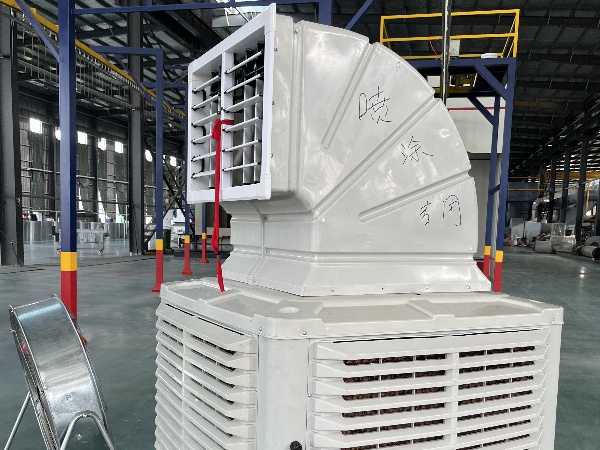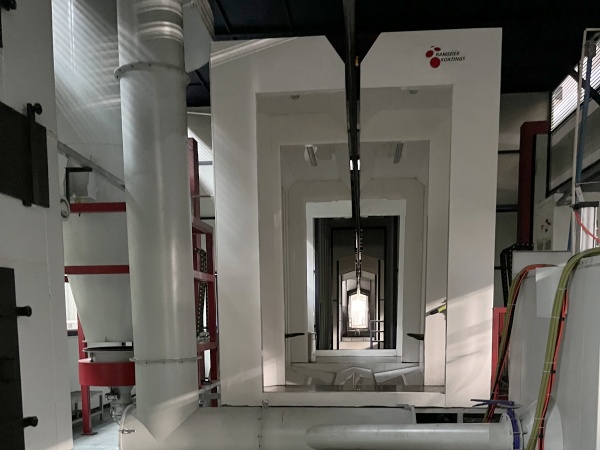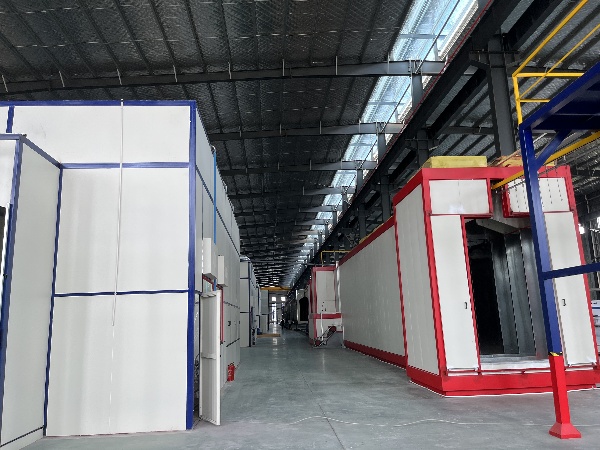Aluminium Veneer
- Home
- Aluminium Veneer
Aluminium veneer refers to the fluorocarbon spraying technology after chromation and other treatments. The final processing of building decoration materials. Fluorocarbon coating mainly refers to polyvinylidene fluoride resin (KANAR500), which is divides into primer, topcoat, and varnish. It consists of panels, stiffeners, and corner codes. It has the characteristics of light weight and good rigidity.


Basic Introduction of Aluminium Veneer
The structure of aluminum veneer is mainly composed of panels, reinforcement ribs, corner codes, and other components.
The maximum work piece size for molding can reach 8000 mm×1800 mm (L×W).
The coating is divided into two coatings and one baking, three coatings, and two baking. Its coating performance meets the AAMA2605-98 standards of AAMA and ASCA.
Conventional thickness: 1.5 mm, 2.0 mm, 2.5 mm, 3.0 mm.
Common specifications: 600*600 mm, 600*1200 mm.
Features of Aluminium Veneer
- Light weight, good rigidity, and high strength. The 3.0 mm thick aluminum plate weighs 8 kg per square plate and has a tensile strength of 100-280 n/mm2.
- Good durability and corrosion resistance. PVDF fluorocarbon paint based on Kynar-500 and hylur500 can used for 25 years without fading.
- Good craftsmanship. Using the process of first processing and then spray painting, the aluminum plate can processed into various complex geometric shapes such as plane, arc, and spherical surfaces.
- The coating is uniform and has various colors. Advanced electrostatic spraying technology enables uniform adhesion between the paint and the aluminum plate, with various colors and a large selection space.
- Not easy to stain, easy to clean and maintain. The non-adhesive nature of the fluorine paint film makes it difficult for pollutants to adhere to the surface and has good cleanliness.
- Installation and construction are convenient and quick.The aluminum panels do not need to be cut at the construction site after being formed in the factory, and they just need to be fixed on the frame.
- It can be recycled and reused, which is beneficial to environmental protection. Aluminum panels are 100% recyclable, unlike glass, stone, ceramics, aluminum-plastic panels, and other decorative materials, and have a high residual value after recycling.




Feature introduction of Aluminium Veneer
Materials and construction
Aluminum veneer curtain walls use high-quality, high-strength aluminum alloy plates. Its commonly used thicknesses are 1.5, 2.0, 2.5, and 3.0 MM, the model is 3003, and the status is H24. The maximum size of conventional materials is 1220 MM×2440 MM.
Its structure mainly consists of panels, stiffeners, and corner codes.
The corner codes can be bent and stamped directly from the panel, and they can also be riveted to the small edges of the panel.
The reinforcing rib connected to the welding screws behind the panel to enhance the strength and rigidity of the aluminum veneer curtain wall. It also ensures flatness and wind and earthquake resistance during long-term use.
The surface of the aluminum veneer curtain wall generally treates with chromation and then treates with fluorocarbon spraying.
Fluorocarbon coating has many advantages.
- Corrosion resistance.
- Weather resistance.
- Resistant to acid rain, salt spray, and various air pollutants.
- Good cold and heat resistance.
- Can withstand strong ultraviolet radiation.
- It can remain colorfast and non-fading for a long time and has a long service life.
Application scope
Aluminum veneer curtain walls are suitable for the decoration of various building interior and exterior walls, such as lobby facades, column decorations, elevated corridors, pedestrian bridges, elevator edging, balcony packaging, advertising signs, indoor special-shaped ceilings, etc.
Building exterior walls, beams and columns, balconies, awnings, airports, stations, hospital conference halls, opera houses, stadiums reception halls, and other high-rise buildings.
About us
Our factory uses high-quality fluorocarbon coatings from world-renowned fluorocarbon coating manufacturers PPG, DNT, AKZO, NIPPON, and other companies. There is a wide range of color choices. Customers can directly choose according to the color plates provided by the manufacturers or provide color sample samples.
If you have a need, you can contact us.
